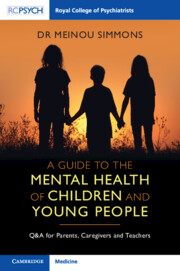Refine search
Actions for selected content:
11 results
Experience of Breastfeeding Mothers During the Earthquake of the Century: A Qualitative Study
-
- Journal:
- Disaster Medicine and Public Health Preparedness / Volume 19 / 2025
- Published online by Cambridge University Press:
- 19 June 2025, e152
-
- Article
- Export citation
Development of the Perceived Challenges in Disaster Response Scale (PCDRS): Validity and Reliability Study
-
- Journal:
- Prehospital and Disaster Medicine / Volume 40 / Issue 2 / April 2025
- Published online by Cambridge University Press:
- 11 April 2025, pp. 86-93
- Print publication:
- April 2025
-
- Article
- Export citation
From worries to resilience: a qualitative study of the psychosocial experiences of diverse adolescents and young adults with heart failure and their caregivers
-
- Journal:
- Cardiology in the Young / Volume 35 / Issue 1 / January 2025
- Published online by Cambridge University Press:
- 21 October 2024, pp. 136-143
-
- Article
-
- You have access
- Open access
- HTML
- Export citation
9 - Relationship Problems
-
- Book:
- Impulse
- Published online:
- 09 February 2023
- Print publication:
- 09 February 2023, pp 168-176
-
- Chapter
- Export citation

A Guide to the Mental Health of Children and Young People
- Q&A for Parents, Caregivers and Teachers
-
- Published online:
- 27 October 2022
- Print publication:
- 03 November 2022
Chapter 7 - Intellectual Disability
-
-
- Book:
- Spirituality and Psychiatry
- Published online:
- 07 October 2022
- Print publication:
- 20 October 2022, pp 139-157
-
- Chapter
- Export citation
3 - Overview of a Pattern Recognition System
- from Part I - Introduction and Overview
-
- Book:
- Essentials of Pattern Recognition
- Published online:
- 08 December 2020
- Print publication:
- 19 November 2020, pp 44-62
-
- Chapter
- Export citation
Writing intervention: A comprehensive program for primary school children
-
- Journal:
- Journal of Psychologists and Counsellors in Schools / Volume 30 / Issue 2 / December 2020
- Published online by Cambridge University Press:
- 03 June 2020, pp. 255-263
- Print publication:
- December 2020
-
- Article
- Export citation
5 - Differentiation: managing the exchange of information
-
- Book:
- Effective Negotiation
- Published online:
- 31 August 2020
- Print publication:
- 29 October 2019, pp 123-149
-
- Chapter
- Export citation
Les aidantes professionnelles à domicile dans l’accompagnement de personnes âgées atteintes de la maladie d’Alzheimer ou présentant des conduites d’alcoolisation : évaluation qualitative et réflexions cliniques
-
- Journal:
- Canadian Journal on Aging / La Revue canadienne du vieillissement / Volume 35 / Issue 1 / March 2016
- Published online by Cambridge University Press:
- 15 January 2016, pp. 79-88
-
- Article
- Export citation
Predicting Motor Skills From Strengths and Difficulties Questionnaire Scores, Language Ability, and Other Features of New Zealand Children Entering Primary School
-
- Journal:
- The Australian Educational and Developmental Psychologist / Volume 31 / Issue 1 / July 2014
- Published online by Cambridge University Press:
- 23 April 2014, pp. 32-46
- Print publication:
- July 2014
-
- Article
- Export citation
